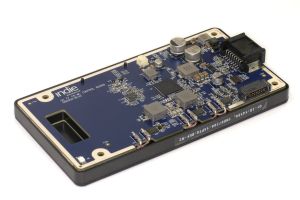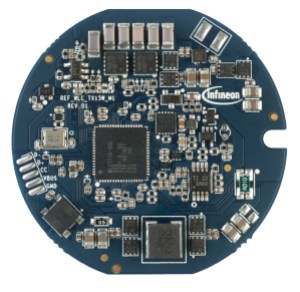Developed by the Wireless Power Consortium (WPC), the Qi wireless charging standard has revolutionized how we power our devices. Eliminating the need to tinker with cables and fret over damaged connectors, Qi has become the de facto standard for wireless charging of consumer mobile devices.
To meet the demand for faster charging speeds and optimized energy transfer, WPC introduced Qi v2.0, or Qi2. This next-generation wireless charging standard builds on the established Qi protocol while addressing its inherent limitations.
This article delves into the world of Qi2, exploring its core functionalities, the different power profiles it uses and the key improvements it brings to the wireless charging of mobile devices.
Overview of wireless charging
Eliminating the need for physical cable connections, wireless charging technology offers an appealing alternative to traditional wired charging methods.
Wireless charging is based on the scientific principle of electromagnetic induction, in which an electric current can be induced in a nearby conductor by a changing magnetic field. A transmitter pad, or charging base, contains a coil that, when activated, produces a magnetic field that varies with time.
The interaction between the transmitter’s changing magnetic field and the receiver coil generates an electric current in the coil. The induced current, after proper signal conditioning, such as filtering and stabilization, can be used to charge the device’s battery.
Standardization is essential to guarantee the compatibility and seamless operation of different wireless charging devices and platforms. WPC released the initial version of the Qi standard in 2010, becoming the prevailing authority in the wireless charging domain.
Qi authentication
The Qi v1.3 specification, released in 2021, represented a significant advancement in the technology with the introduction of one-way authentication. This feature mandates that the transmitter pad undergoes a cryptographic verification process before initiating the charging process.
This verification ensures that the mobile device is interacting with a trusted source, mitigating risks associated with unauthorized or malicious chargers that could potentially damage the battery or the device itself as a result of unacceptable power levels.
Wireless transmitters emitting over 5 W of power must be manufactured with a unique certificate pre-installed. To receive certification, the transmitters must meet all Qi certification criteria.

Figure 1: The indie Semiconductor design for in-cabin wireless charging (Source: STMicroelectronics)
The power receiver authenticates the certificate to determine the genuineness of the product. To mitigate the risk of counterfeit certificates, both the receiver and transmitter generate a challenge response. After a successful validation process, it is possible to charge at power levels above 5 W.
An example of an authentication chip is STMicroelectronics’ STSAFE-V100-Qi, an automotive SoC compliant with the WPC Qi v1.3.x and v2.0 authentication protocols. Featuring asymmetric cryptography, this AEC-Q100-qualified device implements the WPC challenge-response principle and stores the certificate for in-vehicle charger authentication.
ST’s secure element IC will be integrated into indie Semiconductor’s Qi-compliant wireless in-car charging reference design (Figure 1), bringing portable device charging to vehicles.
From MagSafe to Qi2
The main innovation introduced in the Qi2 standard is undoubtedly the integration of Apple’s MagSafe magnetic technology. With the introduction of MagSafe in 2020, Apple presented an innovative solution that integrated magnetic attachments with wireless charging.
By using magnets located in specific positions, MagSafe ensures an optimal alignment between the device and the charger, thus boosting charging efficiency and removing the requirement for exact placement.
Acknowledging its potential, the WPC integrated the magnetic alignment capability into the Qi2 standard. This represents a significant transition toward universality. Qi2-certified chargers provide both the secure magnetic attachment in MagSafe and the potential for quicker charging speeds for compatible devices, regardless of the brand.
Understanding power profiles: BPP, EPP and MPP
For efficient and safe power transfer, Qi2 uses different power profiles, depending on the capabilities of the device and charger.
Basic Power Profile (BPP)
This is the most widely used profile in the original Qi standard. It offers a basic level of compatibility but is limited in terms of charging speed, typically delivering up to 5 W. BPP relies on simple coil-to-coil coupling, where precise placement of the device on the charging pad is critical for efficient power transfer.
Extended Power Profile (EPP)
This profile expands on the BPP by allowing for higher charging speeds, reaching up to 15 W in the original Qi standard. EPP utilizes additional communication protocols between the charger and device to negotiate optimal power levels and to ensure safety. However, EPP still relies on coil-to-coil coupling, meaning precise placement is necessary for efficient charging.
Magnetic Power Profile (MPP)
This profile is the main innovation introduced in Qi2. Based on Apple’s MagSafe technology, MPP incorporates magnets into both the charger and the receiving device. These magnets ensure perfect alignment, eliminating the need for precise placement on the charging pad.

Figure 2: Infineon’s Qi2 MPP charging transmitter solution, with a diameter of less than 43 mm, addresses consumer demand for improved wireless charging. (Source: Infineon Technologies AG)
This not only improves user convenience but also enhances charging efficiency and safety. Additionally, MPP enables faster charging speeds, with Qi2 devices delivering up to 15 W of power like EPP.
Among the first chipmakers to provide Qi2-compliant solutions is Infineon Technologies AG with the introduction of the REF_WLC_TX15W_M1 reference design kit, its first Qi2 MPP wireless charging transmitter solution. Based on Infineon’s highly integrated and programmable WLC1115 wireless charging transmitter IC, the solution board (Figure 2) delivers up to 15-W output using the Qi2 MPP protocol.
The WLC1 integrates a microcontroller with flash memory, a 4.5-V to 24-VDC input buck-boost controller, inverter gate drivers and factory-trimmed current sensing. Other features include analog protection peripherals, USB-PD and LIN, as well as serial interfaces for efficient and smart power delivery
The 15-W Qi2 MPP solution board is also backward-compatible with BPP receivers. The Infineon WLC1 transmitter controllers are available in consumer (WLC1115) and automotive (WLC1515) packages.
The REF_WLC_TX15W_M1 is supported with code examples in the ModusToolbox. Also included are a multi-path ASK demodulator and adaptive foreign object detection.
Qi2 brings improvements
The introduction of Qi2 brings several key improvements over the original Qi standard:
- Enhanced user experience: The magnetic alignment of MPP eliminates the risk of misplacing the device on the charging pad, ensuring a secure and efficient connection.
- Faster charging speeds: While the maximum power delivery remains at 15 W, Qi2 offers more reliable charging due to the improved alignment with MPP. This maximizes the power transfer efficiency, resulting in faster charging times.
- Improved safety: Precise alignment with MPP reduces the risk of overheating, a concern with traditional Qi charging. Additionally, Qi2 incorporates advanced foreign object detection to prevent accidental charging of metallic objects that could cause damage.
- Wider compatibility: By maintaining backward-compatibility with existing Qi-enabled devices, Qi2 ensures a smooth transition for all users.
- Expandable technology: The communication protocols within MPP can be further developed to enable features like dynamic power negotiation based on device needs and thermal conditions.
An example of recently announced Qi2 chargers is shown in Figure 3. The latest Qi2 portfolio from Belkin offers fast wireless charging of up to 15 W for Qi2-compatible devices. It ensures accurate alignment, works with a wide range of devices and has received certification from the WPC.
Advertisement






